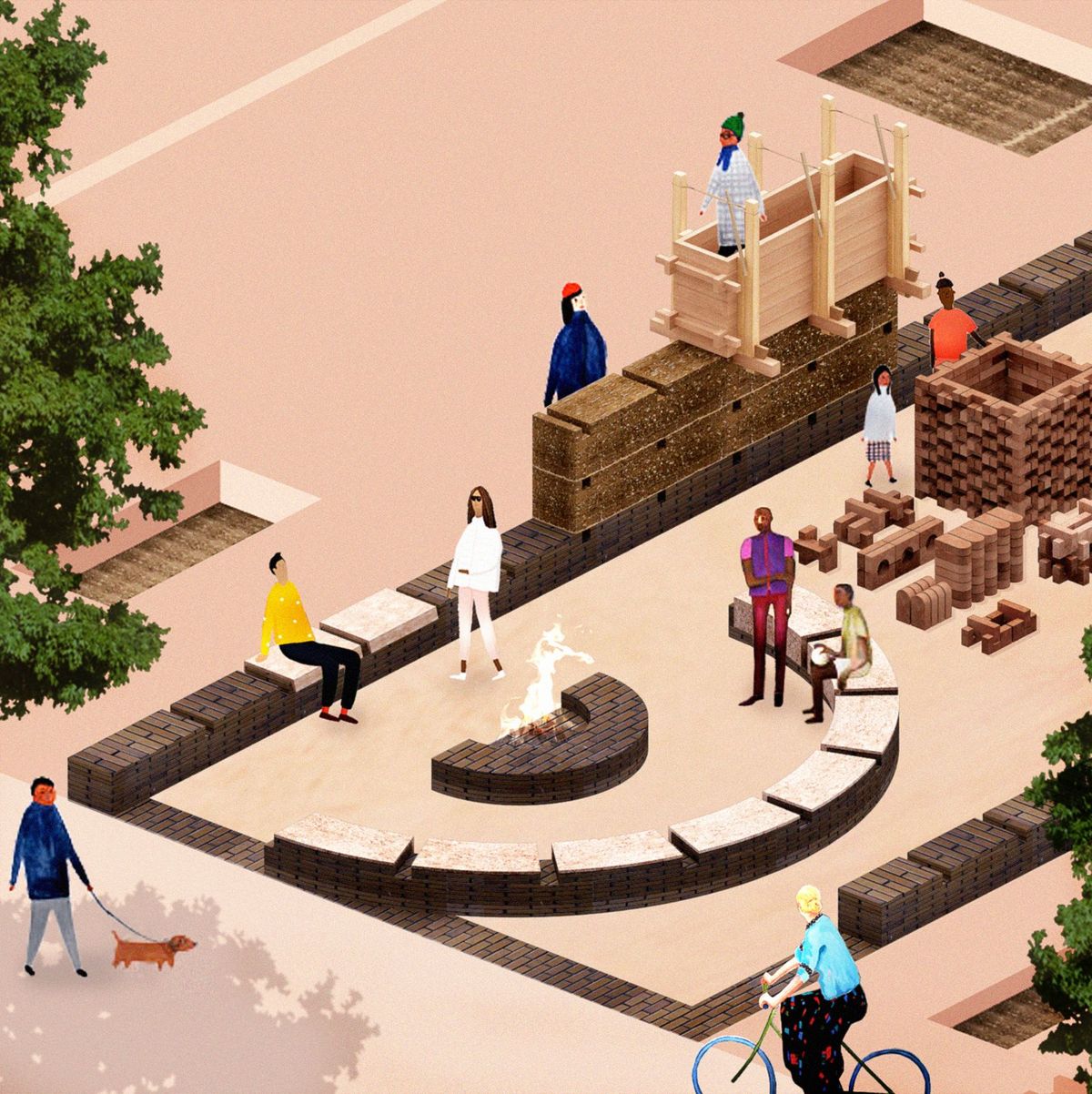For the fourth edition of the Chicago Architecture Biennial (CAB), opening 17 September, participants were invited to put the needs of community at the center of their projects. More than 80 contributors from over 18 countries responded to the theme — The Available City — with site-specific installations and programmes that take visitors to six different neighborhoods, demonstrating, in part, how urban design can also be a form of activism.
The biennial’s artistic director David Brown, a designer and researcher who teaches at the School of Architecture at the University of Illinois at Chicago, has been preoccupied with the amount, and the potential, of city-owned vacant land for more than a decade. As part of his ongoing research, Brown presented a version of The Available City at the 2012 Venice Architecture Biennale, and then for the inaugural CAB in 2015, he invited nine teams to examine possible uses for more than 15,000 empty lots. Brown created an illustration that combined plots into a land mass equal to the size of the Loop, Chicago’s downtown business district (the amount fluctuates but the size remains about the same today).
The biennial now takes into account how all those individual spaces create a landscape and how all the sites might work together. “What I am doing is looking at the community first and finding out how they would utilise spaces,” Brown says. “I think the biennial is demonstrating that directly.” And while it may seem that the idea for every empty lot is a garden, the needs and ideas for how to use empty spaces are quite varied. “There is a greater diversity and greater interest than we know.”
One of the neighborhoods where CAB is presenting site-specific installations is Lawndale, about five miles west of downtown. Brown learned about the under-resourced area through the 2004 Greystone Initiative, which sought to support residents in renovating and restoring historic properties and thereby attracting investment to the area.
On a block-long stretch of empty lots along a busy road in the North Lawndale neighbourhood—save for one small storefront church, Work of His Hands Ministries—Soil Lab, the winners of an open call from the Danish Arts Foundation for a biennial project, have spent months building a ceramics studio with community residents, offering training in brick making and the ancient craft of building rammed-earth walls. The brick is a common thread between the group's members — the Irish architects James Martin and Eibhlín Ní Chathasaigh and Danish architect and designer Anne Dorthe Vester and Maria Bruun.
One growing concern about biennials is that they produce a ton of stuff for a limited period of time for an audience of outsiders. The organisers addressed this by creating the open call that emphasised community engagement. While many would like the ceramic studio to become a permanent neighbourhood space, the land has only been leased from the city through the end of the year.
At the south end of the land is PermaPark — an urban food forest used as an outdoor classroom by the nearby CCA Academy which created the space in 2017 in partnership with the School of the Art Institute of Chicago. It will serve as a free vaccination site over the opening weekend, with a newly completed center structure designed for shaded gatherings.
Sekou Cooke, a Jamaican-born architect who is based in Charlotte, North Carolina, installed Grids + Griots in a lot next to a community bicycle share programme operated by the nearby Young Men’s Educational Network. Cooke’s project is made of repurposed shipping containers, with seating and planter boxes that can be reconfigured to suit the needs of the bike programme. In a project statement, Cooke explains that like a griot, a storyteller character that exists in any West African cultures, “the container elements break free from the gridded pavement to determine their own freeform rhythm.”


